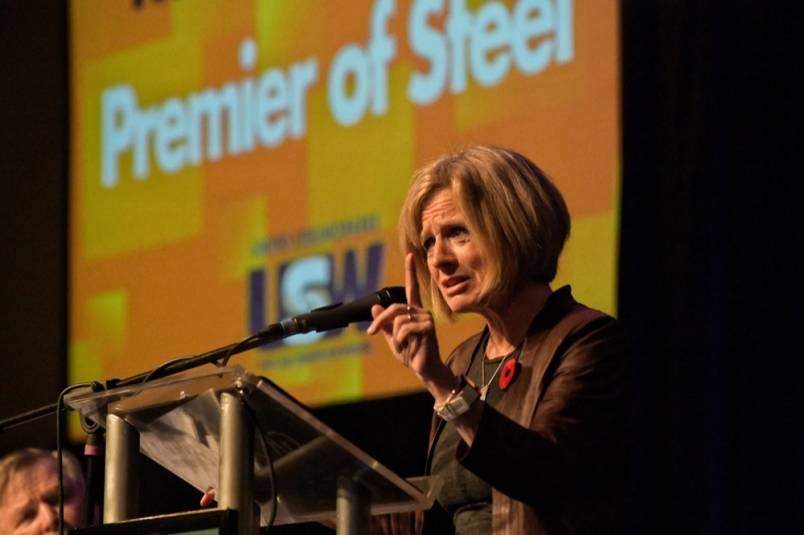The Alberta government’s decision to spend $3.7 billion to move more crude by rail was made necessary by its poorly considered move to impose production curtailments, executives with Husky Energy Inc. charged on Tuesday.
The Calgary-based company, which has opposed curtailments as an unwelcome interference in the market, raised its level of criticism on a conference call to discuss its fourth-quarter results.
Husky maintains that its integrated upstream and downstream operations and pipeline contracts had allowed it to continue to make profits even when discounts on western Canadian crude reached record levels last November.
“For Husky, it’s absolutely a net negative because we were completely capturing the full value of the value chain prior to curtailment and all that’s happened is we’re producing less barrels now,” said CEO Rob Peabody.
The province imposed production quotas as of Jan. 1 on larger producers designed to keep 325,000 barrels per day of crude off the market, supporting prices by opening space on full export pipelines and drawing down overflowing storage.
Discounts quickly evaporated, leading to criticism from companies with refining and retail assets like Suncor Energy Inc. and Imperial Oil Ltd. — who had opposed the production cuts — that crude-by-rail was no longer profitable.
READ MORE: Alberta investing $3.7B to move oil by rail, leasing cars
Curtailment supporter Cenovus Energy Inc., however, said it would increase its crude-by-rail shipments as economics would likely improve over time.
The province announced last month it would increase production quotas in February and March by 75,000 bpd due to declining storage levels.
But Husky chief operating officer Rob Symonds said on the call Husky is actually being hit harder now than it was in January.
“In February and March … the province has said the curtailment is being reduced, but our quota went down,” he said. “So our curtailment went up when the provincial number went down. That’s why I’m a little confused as to how the math works.”
He wouldn’t give Husky’s actual quota number but said the company has shut in some conventional heavy oil wells that will likely be too badly damaged to be started up again when curtailment ends.
Shares in Husky Energy Inc. fell Tuesday after it reported fourth-quarter net income that missed expectations.
Its results were hit by suspended production following an oil spill at its White Rose oilfield off the coast of St. John’s, N.L., a longer-than-expected maintenance shutdown at its refinery in Lima, Ohio, and lower oil prices.
The Calgary-based company’s stock fell by as much as seven per cent on the Toronto Stock Exchange to $14.86 in early afternoon trading.
The company reported $216 million in net earnings in the last three months of 2018, versus analyst expectations of $257 million, according to Thomson Reuters Eikon.
That compared with a profit of $672 million in the same quarter a year earlier.
Production averaged 304,000 barrels of oil equivalent per day, down from 320,000 boe/d a year earlier.
It expects output this year to average 290,000 to 305,000 boe/d, including oil curtailments and the loss of production from White Rose through at least the first quarter.
Dan Healing, The Canadian Press



